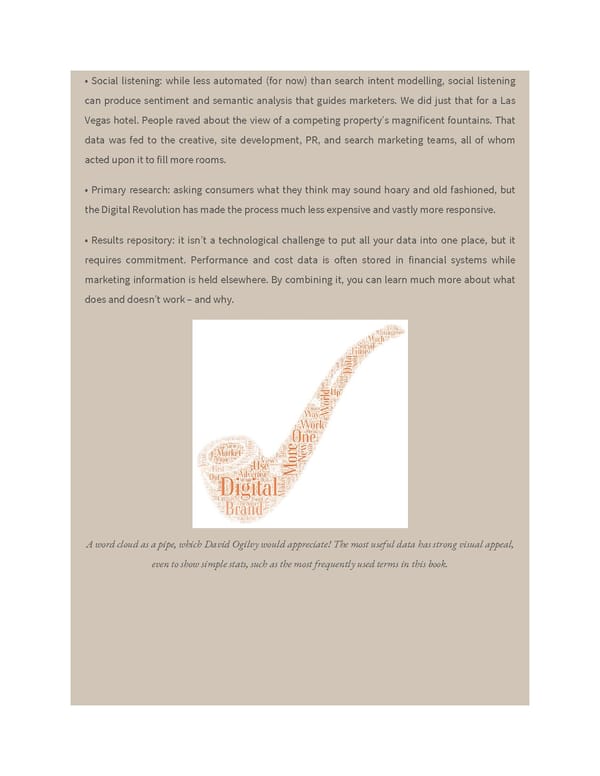• Social listening: while less automated (for now) than search intent modelling, social listening can produce sentiment and semantic analysis that guides marketers. We did just that for a Las Vegas hotel. People raved about the view of a competing property’s magnificent fountains. That data was fed to the creative, site development, PR, and search marketing teams, all of whom acted upon it to fill more rooms. • Primary research: asking consumers what they think may sound hoary and old fashioned, but the Digital Revolution has made the process much less expensive and vastly more responsive. • Results repository: it isn’t a technological challenge to put all your data into one place, but it requires commitment. Performance and cost data is often stored in financial systems while marketing information is held elsewhere. By combining it, you can learn much more about what does and doesn’t work – and why. A word cloud as a pipe, which David Ogilvy would appreciate! The most useful data has strong visual appeal, even to show simple stats, such as the most frequently used terms in this book.
 Ogilvy on Advertising in the Digital Age Page 219 Page 221
Ogilvy on Advertising in the Digital Age Page 219 Page 221